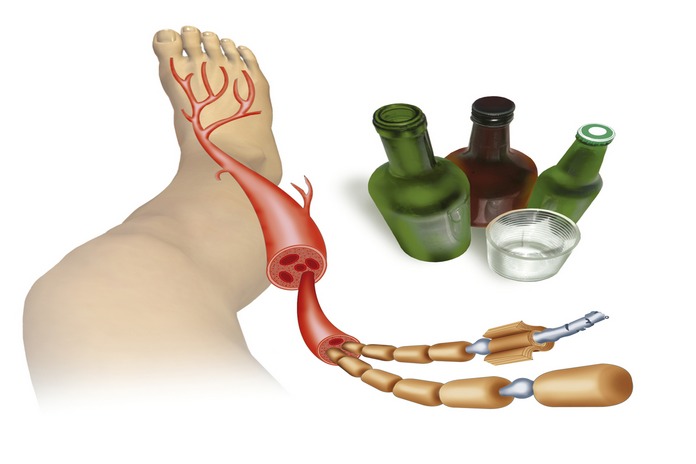Peripheral Neuropathy Types

Peripheral neuropathy is described as a condition affecting the peripheral nervous system. The peripheral nervous system includes all of the nerves in the body outside of the brain and spinal cord. There are many different types of peripheral neuropathy, each with its own set of symptoms. Some of the most common types of peripheral neuropathy include: (3)
Mononeuropathy
Mononeuropathy affects a single nerve. It can be triggered or caused by an infection, trauma (injury), or a tumor. Symptoms may include pain, weakness, numbness, or tingling in the affected area. Treatment depends on the cause of the mononeuropathy. Example of mononeuropathy is sciatica and carpal tunnel syndrome.
- Sciatica: Sciatica is a type of mononeuropathy that affects the sciatic nerve – the longest and largest nerve in the body. Sciatica can cause pain, tingling, or numbness in the legs and feet. It can develop secondary to an injury or compression of the sciatic nerve. Sciatica can be acute that usually resolves within a few weeks or months. Chronic sciatica is caused by a long-term problem such as a herniated disk, spinal stenosis, or piriformis syndrome. This type of sciatica can last for years.
- Carpal tunnel syndrome: This type of neuropathy is caused by pressure on the median nerve as it passes through the carpal tunnel in the wrist. It causes pain, tingling (pin-prick sensations), and numbness in the hand and fingers.
Polyneuropathy
Polyneuropathy is a medical condition that affects more than one or multiple peripheral nerves. These nerves carry messages from the brain and spinal cord to the rest of the body. There is no single cause of polyneuropathy. Some of the causes include injuries, infections, autoimmune diseases, exposure to toxic substances, and problems with the blood flow to the nerves. Damage to the multiple peripheral nerves at once can cause a wide range of symptoms, including pain, numbness, tingling, weakness, and difficulty walking.
- Diabetic neuropathy: The most common type is diabetic neuropathy, which is caused by damage to the nerves due to diabetes. Diabetic neuropathy is a type of polyneuropathy caused by diabetes and is the most common form of peripheral neuropathy. It affects the nerves in the feet and legs, causing pain, tingling, numbness, and weakness.
Other types of polyneuropathies include Guillain-Barre syndrome, chronic inflammatory demyelinating polyneuropathy (CIDP), and amyloid neuropathy.
Radiculopathy
Radiculopathy is a type of peripheral neuropathy that affects the nerve roots that branch out from the spinal cord. This condition can cause pain, tingling, numbness, and weakness in the arms and legs. There are several different types of radiculopathy, each caused by a different underlying condition. The most common type is lumbar radiculopathy, which affects the lower back. Other types include cervical radiculopathy (the neck), thoracic radiculopathy (the middle back), and sacral radiculopathy (the tailbone).
Radiculopathy can develop due to be a variety of conditions, including: herniated discs, degenerative disc disease, spinal stenosis, spondylolisthesis, and tumors. In most of the cases, the underlying cause of the condition is unknown.
- Lumbar radiculopathy: Lumbar radiculopathy is a type of peripheral neuropathy that affects the lower back. The condition can result from compression or irritation of one or more of the lumbar nerve roots (L4, L5). This can happen when there is an abnormality in the bones or discs in the spine, such as a herniated disc. Lumbar radiculopathy can also be caused by a tumor or infection. Symptoms include pain, numbness, and tingling in the lower back and down one leg. Treatment may include medication, physical therapy, or surgery.
